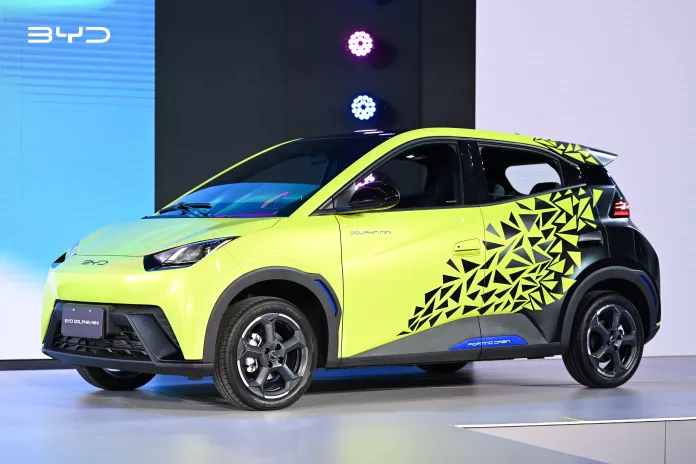An impending revolution is on the horizon. While the precise timing remains shrouded in mystery, the signs are clear: a Chinese-led upheaval in the electric vehicle (EV) space is approaching. With their market already laying the foundation through early investments and dominating the battery supply chains, China’s EV industry is on the brink of a global expansion—with 2024 marked as the year to watch.
The narrative may sound familiar, but witnessing the unfolding reality is nothing short of exhilarating. Affordable Chinese EVs are on the ascendancy. A landscape dotted with diverse and credible options, coupled with the gradual achievement of price parity, is set to bolster EV sales, inevitably at the cost of traditional internal combustion engine (ICE) vehicles. Even as protectionism could play a role in the US, EU, and Japan, it’s unlikely to stem the tide in overseas markets, including the nascent Latin American sector.
Indeed, speculation posits that the BYD Dolphin Mini, known domestically as the BYD Seagull, is the harbinger of this change. But there’s more at play here. The escalating price wars in China, competition amongst Chinese automakers, and their newfound ability to undercut ICE vehicle prices signal a potential reckoning for traditional automakers.
The Mexican Market: Price Wars and Local Production
BYD’s Disruptive Arrival
The introduction of the BYD Dolphin Mini in Mexico has sparked a fierce price battle, with offerings like the 30 kWh version at MXN$358,800 (approximately $21,000) and the 38 kWh variant at MXN$398,800 (about $23,000). This initiative sets a new precedent for city-car range and affordability, challenging competitors to respond swiftly.
The Race to the Bottom
The swift reaction by brands like JAC, which reduced their E10X model to MXN$357,000 (around $21,100), and SEV, slashing their E-Wan down to MXN$299,000 (circa $17,750) indicates both their margins and readiness to compete. With BYD looking to establish manufacturing within Mexican borders, a localized clash for EV dominance is imminent.
The rapid advances in EV affordability and performance suggest an explosive growth trajectory for Mexico, where plug-in market share stood merely at 1.3% in 2023. As the market continues to evolve, so does the potential for change, but the pace remains unpredictable.
Colombia Welcomes Competitive EV Pricing
Auteco Blue and the Dongfeng S50
While Colombians anticipate the Dolphin Mini, Auteco Blue — previously rooted in motorcycles — has astounded the market with the Dongfeng S50. This Model 3-sized sedan, offered mainly to fleets and taxis, embodies a new era of affordability, setting a compelling price tag of COP$104,000,000 (around $26,630).
Brazil and Uruguay: Embracing the BYD Dolphin Mini
Brazil’s burgeoning EV market, buoyed by the BYD Dolphin Mini’s promised production in a new local plant by 2024, has demonstrated that even with a competitive price, a 38 kWh version at BRL $115,800 (approximately $23,400), market influence extends beyond mere cost.
As these nations open up to innovations like the Dolphin Mini, trends hint at significant market share boosts, potentially nearing the double digits by year’s end. In Uruguay, the model’s introduction has already brought about substantial price reductions in existing offerings, signaling an intense competition constantly reshaping the market.
Observations on Latin America’s EV Sector
The shift to affordable EVs, long prophesied, is finally manifesting across Latin America, though uncertainties regarding the pace of transition from ICEVs to EVs linger. As some brands solidify their presence and markets edge towards price parity, the question is less about “if” and more about “when” a full-scale adoption will occur.
Current champions of the industry, such as Toyota with their hybrid models, may enjoy temporary triumphs, but as EVs continue to improve and drop in price, even hybrids could face a dwindling market share. Automotive giants are challenged to adapt swiftly or risk obsolescence in this dynamically shifting landscape.
Moving beyond sales, the emergent challenge revolves around supporting infrastructure, particularly charging stations. While the proliferation of EVs generates demand for more fast-charging options, the burden may fall on EV companies themselves to accommodate this requisite growth.
The horizon is bright for Latin America’s EV market, even if challenges proliferate with growth. The story unfolding is one of transformation—a tale of technology racing forward, rewriting industry norms and consumer expectations alike.


























